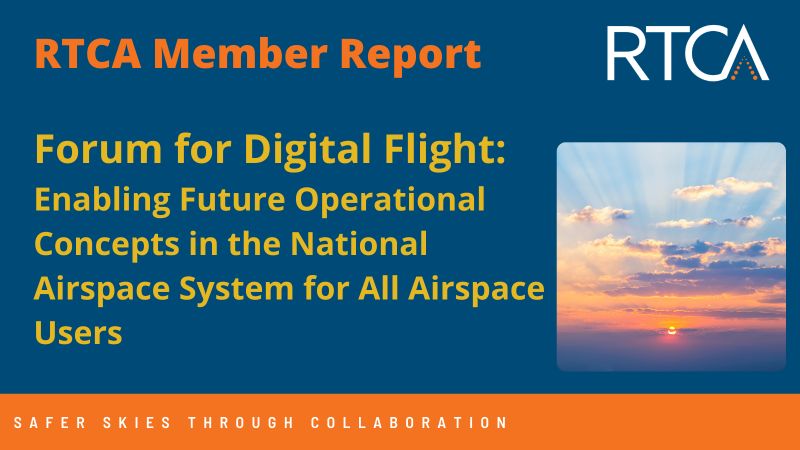US standards agency RTCA has published the white paper: Forum for Digital Flight: Enabling Future Operational Concepts in the National Airspace System for All Airspace Users in a call to action in the near term and in the long term to achieve the vision of Digital Flight.
The RTCA Member Report provides a brief introduction of Digital Flight, a discussion of the use cases that enable users of the airspace, barriers, solutions, and a path forward for the community. A key principle underpinning this report, and every discussion around the topic of Digital Flight, is that the safety and efficiency of all aviation activities must be preserved and should be improved. The prospect of introducing Digital Flight offers the potential for significant value to the aviation industry, the airspace user communities, individuals such as pilots, controllers, and dispatchers, and the ultimate beneficiary of aviation: the general public.
Digital Flight is a proposed new operating mode for all airspace users, complementing and adding to the existing operating modes of visual and instrument flight rules (VFR and IFR) and providing for cooperative integration in all airspace. Under new regulations (Digital Flight Rules, DFR) that set requirements for its sustained use, qualified operators employ Digital Flight to enhance their airspace access and operational flexibility in all visibility conditions without segregation from incumbent operations.
The introduction of Digital Flight seeks to benefit both new entrants and incumbents in the aviation ecosystem.
Highlights:
– Paradigm shift: Flight operations relying on digital information.
– Four crucial elements: Digital connectivity, shared traffic awareness, cooperative practices, and separation automation.
– Digital Flight Rules (DFR): A regulatory framework offering combined IFR airspace access and VFR operational flexibility.
For more information visit:
https://www.rtca.org/wp-content/uploads/2023/12/RTCA-FDF-White-Paper_FNL-1.pdf




